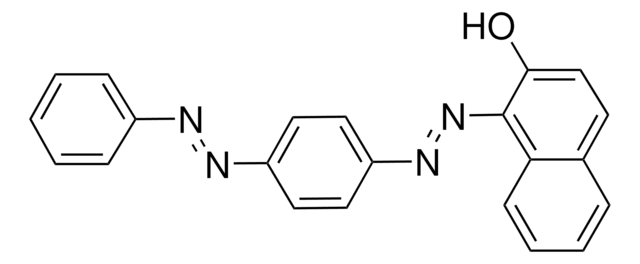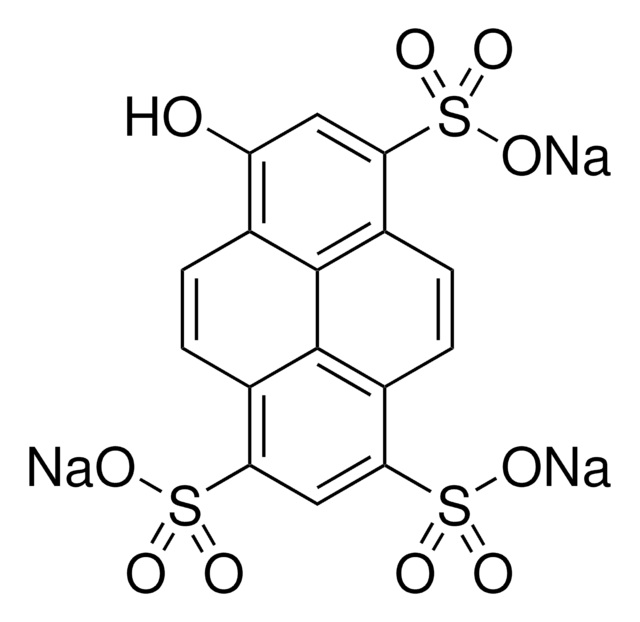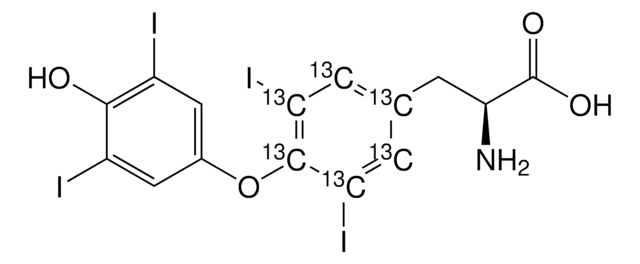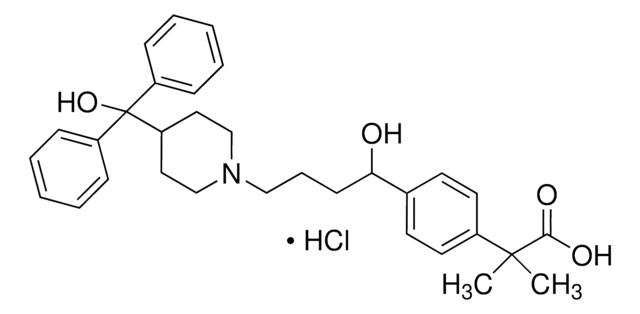T2501
L-Thyroxine sodium salt pentahydrate
≥98% (HPLC), powder
Sinónimos:
3-[4-(4-Hydroxy-3,5-diiodophenoxy)-3,5-diiodophenyl]-L-alanine sodium salt, Sodium levothyroxine, T4
About This Item
Productos recomendados
origen biológico
synthetic (organic)
esterilidad
non-sterile
Análisis
≥98% (HPLC)
formulario
powder
mp
207-210 (dec.) (lit.)
solubilidad
4 M NH4OH in methanol: 50 mg/mL, clear to hazy, colorless to yellow
Condiciones de envío
ambient
temp. de almacenamiento
−20°C
cadena SMILES
O.O.O.O.O.[Na+].N[C@@H](Cc1cc(I)c(Oc2cc(I)c(O)c(I)c2)c(I)c1)C([O-])=O
InChI
1S/C15H11I4NO4.Na.5H2O/c16-8-4-7(5-9(17)13(8)21)24-14-10(18)1-6(2-11(14)19)3-12(20)15(22)23;;;;;;/h1-2,4-5,12,21H,3,20H2,(H,22,23);;5*1H2/q;+1;;;;;/p-1/t12-;;;;;;/m0....../s1
Clave InChI
JMHCCAYJTTWMCX-QWPJCUCISA-M
Información sobre el gen
mouse ... Cnr2(12802)
rat ... Cnr1(25248)
¿Está buscando productos similares? Visita Guía de comparación de productos
Acciones bioquímicas o fisiológicas
Nota de preparación
Producto relacionado
Palabra de señalización
Danger
Frases de peligro
Consejos de prudencia
Clasificaciones de peligro
STOT RE 1
Órganos de actuación
Thyroid,Cardio-vascular system,Kidney
Código de clase de almacenamiento
6.1C - Combustible acute toxic Cat.3 / toxic compounds or compounds which causing chronic effects
Clase de riesgo para el agua (WGK)
WGK 3
Punto de inflamabilidad (°F)
Not applicable
Punto de inflamabilidad (°C)
Not applicable
Equipo de protección personal
Eyeshields, Gloves, type N95 (US)
Certificados de análisis (COA)
Busque Certificados de análisis (COA) introduciendo el número de lote del producto. Los números de lote se encuentran en la etiqueta del producto después de las palabras «Lot» o «Batch»
¿Ya tiene este producto?
Encuentre la documentación para los productos que ha comprado recientemente en la Biblioteca de documentos.
Los clientes también vieron
Nuestro equipo de científicos tiene experiencia en todas las áreas de investigación: Ciencias de la vida, Ciencia de los materiales, Síntesis química, Cromatografía, Analítica y muchas otras.
Póngase en contacto con el Servicio técnico









